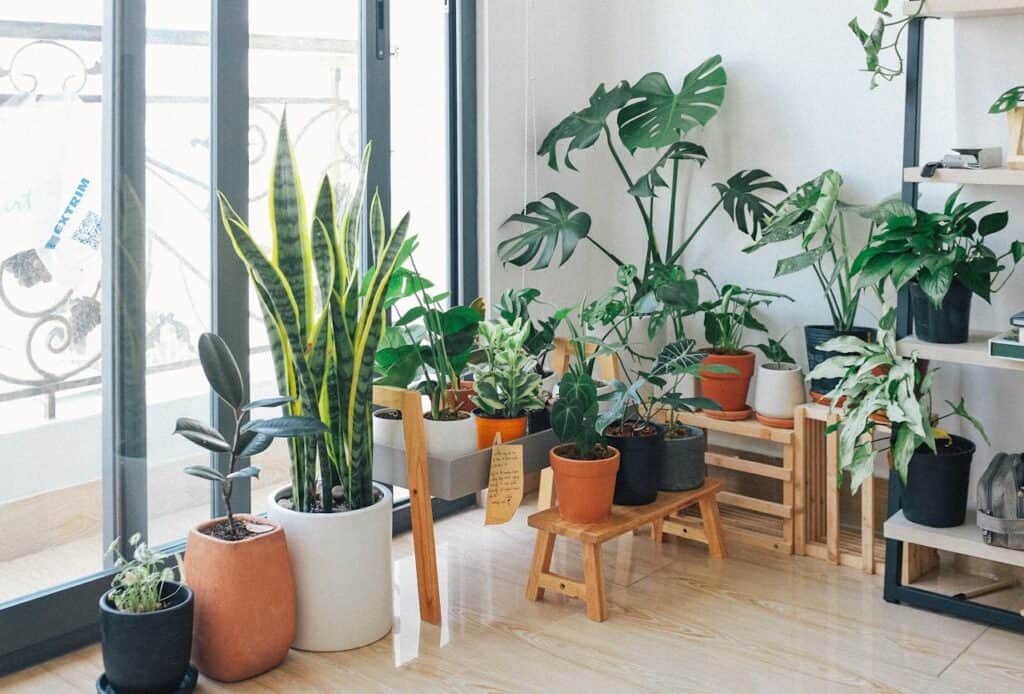Working remotely offers many benefits: reduced commuting time, increased flexibility, and cheaper lunch costs. However, it also requires important trade-offs. Hello, blurred boundaries, endless distractions, and bingeable streaming temptations!
We’ve written before about strategies to combat these trade-offs and enjoy a healthier remote work lifestyle. Now, we’re going to dive more specifically into work-from-home self-care tips to keep your happiness (and sanity) intact.

What is work-from-home self-care?
Self-care is generally defined as effort taken to preserve or improve your mental and physical health and wellbeing.
That definition leaves lots of wiggle room, and that’s good! Self-care practices should focus on your “self”: The things, people, places, hobbies, and even foods you like. Engaging in positive self-care can leave you refreshed enough to face another day and helps avoid overwork and burnout.
So, how do you engage in work-from-home self-care productively?
Let’s find out!

Enforce your boundaries
“Good fences make good neighbors” translates well into maintaining a healthy work-life balance. Without fences, it’s easy to spend “just a few” minutes working or answering emails on weekends. Those minutes away from your family add up – and can contribute to burnout.
Erecting sturdy fences (i.e., setting boundaries) between your professional and personal life keeps you on task at work and off task at home.
- Turn off work notifications on your time and personal notifications on paid time
- Pin your work hours to the entrance of your office space
- Stop taking work appointments an hour before clock-out
You might even establish rituals, like making a cup of tea, to signal your brain that home time’s begun.
Take your breaks – by force, if you have to
Leave room in your workday for frequent breaks to move, get a snack, do chores, or breathe deeply. (Checking social media doesn’t count!) This is especially important if you work with screens, as your eyes and posture need time to rest and reset. Plus, work breaks keeps you focused, increases creativity and energy levels, and alleviate stress.
If you struggle to step away, try an established break schedule. The Pomodoro Method suggests working for 25 minutes and breaking for 5. You can alter the time to fit your needs: work for 50, take 20; work 45, take 15; and so on.
Take your vacations!
Taking breaks extends to full vacations, too. It’s natural to want to increase your productivity or turn more time into money. But you won’t be too productive when you’re crying to your spouse that you hate your work chair because you worked 18-hour days for five weeks straight. (Not that I have any experience with that, of course.)
Prevent burnout by taking 2-3 days off each week and scheduling 1-2 weeks of vacation every few months. Even if all you do is lounge around reading trashy novels or playing with the dog, you deserve that down time!
Make a point to move
Schedule time in your workday to move and stay healthy and focused. Use your breaks to go for a run, walk the dog, or hit your home gym. Invest in a good yoga mat or Pilates bar to wiggle your way through boring meetings. Install a mini stair stepper or walking treadmill under your desk. After work, sign up for a gym or weekly spin class, play soccer with friends, or go hiking in the woods. However you like to move, do it – often.

Get outside every day, even for just a few minutes
Research shows that going outside imparts a multitude of benefits, like:
- Reducing anxiety
- Improving sleep, focus, and self-esteem
- Boosting creativity and problem-solving
- Building your walking muscles
- Increasing your Vitamin D production
All it takes is a few minutes outside (ideally in green spaces, like your backyard or local park) to become a happier, healthier person.
Bring the outdoors, indoors
If you can’t get outdoors, you can bring the outside, in. Building a “biophilic” (life-loving) workspace can improve productivity, memory retention, and creativity. Start with a few stress-relieving plants, like the striped snake plant, waxy jade, or healing aloe vera. Peace lilies also make a nice addition (but avoid all lilies if you have cats!).
Relax with nature-themed art
Decorating your office spends lends your workspace a touch of personality and control. Leaning into nature-themed designs brings more of the outdoors inside so you can reap the stress-relieving benefits.
For instance, a tabletop fountain pairs a lovely visual with the relaxing sound of rushing water. Fake plants like shrubs, succulents, and hanging plants make ideal additions if you lack sunlight or suffer from allergies. You can even hang tree– or forest-themed tapestries to drape your walls in greenery!

Grow an herb garden
On a similar note, growing an herb garden pairs coziness, delicious food, and soothing aromatherapy. (Plus, it’s a lot less intensive than maintaining an office jungle.) Cheap, low-stress herbs splash some greenery into your day and even gives the kiddos a chance to get involved. Plus, you can choose between a dirt-based or low-effort hydroponic system to fit your life.
Invest in ergonomic furniture
We’ve touched on this one before, but it’s important enough we’re going to harp on it again. Just as you need the right software to do your job well, you also need the right furniture. Among other tips, the Mayo Clinic recommends:
- Using comfortable seating or even an ergonomic gaming chair that keeps your feet flat on the floor
- Or, try a kneeling chair or rocking-kneeling stool for more natural posture
- Adding seat padding or lumbar support for proper body alignment
- Aligning your keyboard with your wrists and shoulders
- Keeping your monitor about an arm’s length away
- Using an ergonomic keyboard, mouse, and adjustable-height stand for your laptop
Keep the rest of your home decluttered and organized
There’s nothing like being greeted by dirty laundry, filthy floors, and a messy living room at the end of your workday. Keeping your home organized throughout the day will help you feel more relaxed and “at home” when you’re…well, at home. Don’t know where to start decluttering? We’ve got an article for that, too!
Be mindful
Mindfulness – being present in the moment – focuses your attention on what’s important now. Busy office workers, remote workers, and SAHMs can all struggle with being in the moment. Take time to pause regularly, breathe deeply, and reset your mind. Your communication skills, social connections, and stress levels will thank you!

Pair meditation with soothing aromatherapy
Meditating for a few minutes daily puts you in a more peaceful, creative headspace.
You might simply relax in a quiet place with a cup of tea or your favorite essential oil diffuser. Some gentle essential oil aromatherapy or calming lavender incense can help construct a more peaceful atmosphere.
Or, maybe you meditate better in the morning sunlight or through some light journaling. Really struggling to find your inner peace? A meditation app like Headspace or Calm can help you find it.
Read books – real books – for pleasure
Reading books – yes, those things made from paper – is a great source of relaxation, laughter, and new ideas. You don’t need to pick up the latest bombshell manifesto, either. A comedic novel, young adult read, or even a comic book all make for pleasurable downtime. Book-of-the-month clubs are a great way to introduce new material regularly.
Make time for hobbies
Working remotely inevitably blurs the lines between work and home. Take back your time by embracing your favorite (ideally non-digital) hobbies off the clock. Get creative through painting or sculpting, listen to music, learn a new instrument, go bird-watching, or piece puzzles together. Whatever you do, make sure it’s fun, relaxing, and not related to work! (Even if you do decide to turn it into a side hustle later.)

Engage in “regular” self-care
Between work-time and family-time, it’s easy to lose track of your days. Don’t just focus on staying efficiently productive; take time to stay okay, too!
Treat yourself to a tea tree oil face mask or hydrating butt mask. (Let’s be honest, that second one is as much about laughing as about hydrating your skin!) Toss in a calming shower steamer or Epsom salt soak once a week. Take five minutes a day to journal about your anxieties or relax with a coloring book. Hell, enjoy some occasional shopping therapy to update your wardrobe and feel great about yourself!
However you like to self-care, take time off – from work, kids, life – to get it done. Because if you’re not at your best, you can’t bring your best.
Most importantly: take care of your mental wellbeing
Taking a mental health day feels like a big ask when you’re facing deadlines and kids’ needs. However, checking out of life occasionally generates enormous personal and professional benefits. So, chase the kids around the house for giggles, then hand them to your spouse and leave for a self-care day. Take time to be selfish.
And if you find your mental health slipping, give yourself the grace to ask for help. Reach out to family, friends, or colleagues for social interaction, laundry favors, or help with your workload. You might also try a therapy portal like BetterHelp, Talkspace, or Sesame to check in with your mental health.
Remember: the time and money you spend on yourself isn’t just for you. It’s for everyone in your life who wants to see you happy, healthy, and well.
